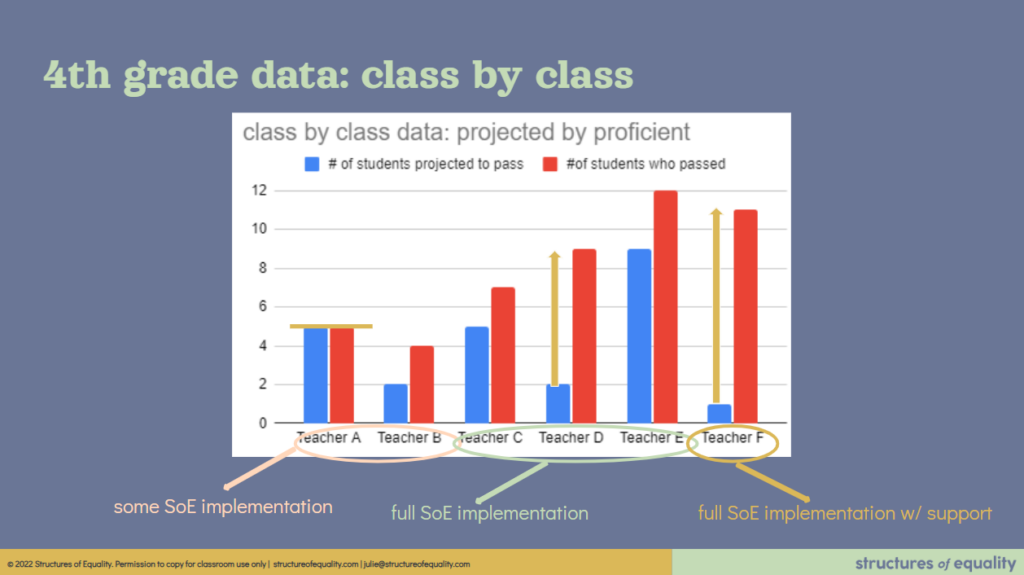September 13, 2023
Analyzing the impact of Structures of Equality (SoE) in classrooms
Updated July 2, 2025
For years, teachers have struggled with how to help students with word problems. A quick internet search will pull up tons of strategies for solving word problems. The problem? None of them adequately address the issue of reading comprehension.
“Word problems in mathematics often pose a challenge because they require that students read and comprehend the text of the problem, identify the question that needs to be answered, and finally create and solve a numerical equation.” (Reading Rockets, Brenda Krick-Morales)
A Quick Recap
➡️ In blog 1, we dug into the reasons students struggle with word problems and teacher frustrations.
➡️ Blog 2 discussed the challenges with math word problems due to comprehension issues and the shortcomings of 4 common strategies.
➡️ In blog 3, you got a brief introduction to the SoE and how they came to be.
➡️ In blog 4, you learned about the components of SoE (values, labels, and the line of equality) and how they were inspired by Singapore bar models.
But do they work?
Structures of Equality is a reading comprehension tool to help students understand what story problems are asking. When students understand the context of a story, they can successfully determine which strategy or operation to use. No more plucking out a number, looking for a keyword, or randomly choosing an operation.
And when students understand what problems are asking them to do, teachers are able to assess what students know and can do around the mathematics.
The data speaks for itself.

Teachers who implemented SoE showed growth way beyond predicted proficiency, 7 times greater than expected in some cases! In the classrooms of teachers D and F only 3 students were projected to pass the End of Grade (EOG) test–but 20 did, including 2 who were ELL!
Okay, they work. But why?
Structures of Equality is a reading comprehension tool. In order to draw the visual representation, or structure, students must have an understanding of what the problem is asking, or the math main idea. Through explicit, scaffolded instruction students learn how to dissect story problems to make sense of them. They then create diagrams that help them determine which operation to use.
These models allow teachers to see where comprehension is breaking down. It also ensures that teachers understand whether the misconceptions students have are related to understanding what the problem is asking, or the computations.
Conclusion
Incorporating Structures of Equality (SoE) fosters math comprehension by helping students in understand problem contexts before they go straight to choosing operations. Consistent SoE use correlates with improved academic scores, and also benefit both students deemed proficient and those who need additional support. You can leverage this framework to empower your students with the skills they need to problem solve with confidence.